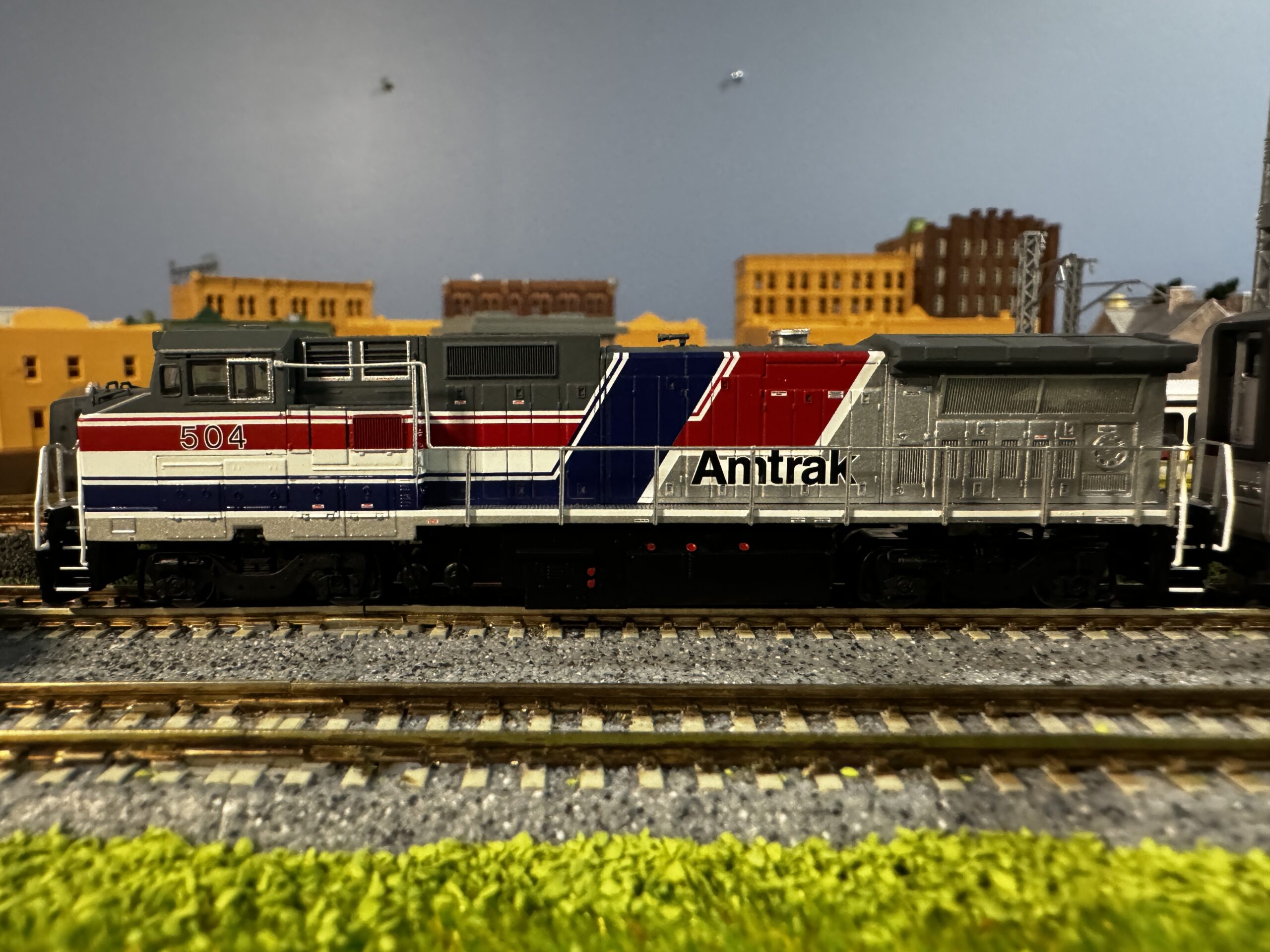I mentioned in the last post the pre-Black Friday purchase of the ScaleTrains ET44C GEVO, but it wasn’t the only pre-Black Friday purchase. I also picked up two Atlas Master GE Dash 8-40BW locomotives from TrainWorld – Amtrak 504 and 509. Since they were released in the last two weeks, TrainWorld lists them as a “New Release” which means that they’re not part of their sale pricing. However, TrainWorld currently is one of the cheapest for them.

These are a re-release of a model that Atlas first produced back in 2002. Back then it was rated well, with crisp printing and fine details. The current version appears to follow that standard – for the most part. But since they’re part of Atlas’ “Master” line, they should look good, shouldn’t they?
This release includes two of the four Amtrak paint schemes that these have been found in. There’s the red, white, and blue “Pepsi Can” scheme that Amtrak most recently recreated in a 50th Anniversary Commemorative paint scheme on a P42.

There’s also the more recent Phase 5 silver and blue scheme

While Atlas did a good job reproducing the Phase 5 scheme on the Dash 8-40, honestly I hope Amtrak dumps it. It may not be as busy as the Pepsi Can, whether it’s in person with the prototype or on the model, the scheme feels boring to me.
At this point these are the only two schemes available, in the real world these also ran in the silver and blue Phase III scheme and in an Amtrak California scheme. I’m not sure how common they were in Phase III, but since you can’t get any Amtrak California or Pacific Surfliner rolling stock beyond the Bachmann SC-44s not producing these in the Amtrak California paint scheme makes sense.
The model is available in DC only or DCC/Sound with an ESU LokSound 5 Micro, if you opt for the DCC/Sound version you also get flashing ditch lights. One thing that I like about the Atlas DCC/Sound version (besides the flashing ditch lights) is that their sound sets come with a variety of “random” sounds that trigger even if the engine is standing still and idling. Even if the engine is just sitting, you’ll hear fans and blowers turning on and off, if you run the engine with the sound on but the engine off you hear flange and break squeal along the way. It’s a simple thing, but it really is a nice touch.

There’s quite a bit with these engines that I really like, and for the most part I think Atlas did a very good job with their latest release. But there’s a problem, and to me it ruins the engine. When I look at reviews of earlier engines, this was an issue back then and it seems that with the rerelease, Atlas hasn’t fixed it.


We need to talk about those trucks – specifically the connection between the trucks and the body. Why is there such a big gap between the top of the trucks and the bottom of the car body? While this isn’t something you’ll notice when you look at the engine from above, or from the front, if you look at the engine from the same height as is you were actually standing next to it, it looks like the engine is on stilts.
It kills me that an engine that looks as good as it does, that had such attention paid to its detailing and yet one fatal detail flaw is allowed to remain.

I’m sure Atlas just reused the existing tooling for Dash 8-40, it’s a quick and cheap way to release a “new” model, and I know this has been a rerelease that has been plagued with delays with it ultimately arriving something like two years after it’s originally anticipated ship date. But even with this rerelease, there were changes made – the first release had a Lenz decoder and I don’t believe it had sound. It’s a pretty good bet that when they decided to put sound in these they had to modify the tooling in order to accommodate the sound decoder. So I have to ask, why couldn’t they come up with a way to either eliminate or mask the gap between the top of the trucks and the bottom of the body? It’s not like Atlas doesn’t know how to deal with that – it’s not an issue on their F59PHi model and several other models they’ve released, so why has this been allowed to remain?

To be fair, Atlas isn’t the only one to release models with gaps like that. Before they even shipped it was pretty clear that BLI’s SD40-2 was going to have a similar gap – it was pretty visible in their drawings of the model before it was released. But it’s a noticeable issue regardless of the model and really damages the realism of a pretty detailed model.


